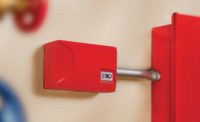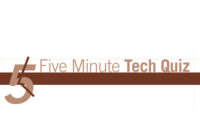Since the economic downturn, there has been a huge drop in commercial building construction — a market that has significant impact on the sales and installation of fire sprinkler systems. Without as many newly installed sprinkler systems needing monitoring, how does this affect fire alarm dealers and engineered systems distributors who work in this market?
Shawn Mullen, president and chief energy officer, Protex Central, Hastings, Neb. advises fire specialists to offer monitoring services to owners of existing sprinklered buildings. “Ask about their needs and listen to what they say,” Mullen states. “When you understand the need and the motivation behind that need — such as an insurance requirement — you’ll be able to provide a competitive solution that adds value…and customers are willing to pay for good value.
“Fire and fire sprinkler monitoring fees trend to the higher end of our fee schedule because of the many code-driven requirements for reporting and testing. If a facility requires an additional UL runner service for equipment requiring manual resetting, monitoring companies will charge an additional fee for that. In our market, the monthly fee for fire sprinkler monitoring is $35 to $45.”
According to Ray Reilly, northeast regional sales manager for manufacturer Silent Knight, Northford, Conn., “The International Building Code (IBC) does not require fully sprinklered buildings to have fire alarm control panels installed, so sprinklered buildings are good monitoring prospects. Dealers need only to connect addressable monitor modules, with waterflow detectors and supervisory switches, to the fire alarm control panel. Another option is to connect those same devices to a slave communicator, which could contact the fire department or central station when an off-normal or alarm condition is detected.
“This is a trend we’re seeing today — owners of fully sprinklered buildings having addressable fire alarm systems installed in order to more effectively protect life and property,” Reilly continues. “In these cases, dealers can add sprinkler monitoring to the installed fire alarm control panel just like they would smoke detectors, manual pull stations, and other fire alarm system components. Although a fire alarm panel may not be required in a sprinklered building, dealers should always comply with applicable codes when monitoring fire sprinkler systems.”
Codes & Compliance Are Key
Dealers need to know a host of codes, regulations and standards — at federal, state and local levels. Shane Clary, vice president of codes and standards compliance, Bay Alarm, Pacheco, Calif., counsels dealers to “know their jurisdictions” before offering fire sprinkler monitoring.
“Ask what NFPA 72 edition your local and state jurisdictions require,” Clary advises. “The newest edition is 2010, but it’s quite common to find jurisdictions using older editions. Find out what fire code is applicable. About half of the states use NFPA 1 and the other half use the International Fire Code (IFC). Know the occupancy classifications in your code, which determine what you need to monitor. In a B (Business Group) classification, you may only be required to monitor flow switches. Other classifications, such as E (Educational Group), may require additional monitoring, depending on the building’s square footage and number of occupants.
“Before getting into fire sprinkler monitoring, I recommend attending training programs and classes offered by NFPA, Automatic Fire Alarm Association (AFAA), and the Electronic Security Association (ESA). Check with your fire prevention bureau, building department, or fire marshal about requirements. Review your licenses. A license to install intrusion systems may not allow you to install fire alarm systems,” Clary emphasizes.
“Keeping up with all these requirements seems like a full-time job,” adds Protex’s Mullen, “but I believe it’s our company’s responsibility to stay on top of them.” Mullen and other Protex executives use multiple outlets to stay current on code changes and issues affecting the industry. “I encourage everyone in this business to be members of NFPA and get involved with other industry associations and organizations. Then, when codes and regulations change, you’ll get a heads up. Also, keep track of what your local fire marshal and inspectors are enforcing so you don’t get blindsided by a new requirement.”
Mike Henke, sprinkler product manager, Potter Electric Signal, St. Louis, Mo., suggests that monitoring companies look into offering sprinkler alarm inspection, test and maintenance. “If your community has adopted NFPA 25 inspection, testing, and maintenance requirements, someone has to do it,” he says. First, however, check your liability insurance, verify your licenses, and attend training from the American Fire Sprinkler Association (AFSA) or National Fire Sprinkler Association (NFSA). It may also be prudent to hire someone from the sprinkler industry for this part of your inspection business.
Clearing up Code Confusion
Given all of the codes and regulations surrounding fire detection, it’s not surprising that there can be confusion about what fire sprinkler monitoring providers are required to do. Tom Hammerberg, president/executive director, AFAA, Jasper, Ga., says, “In 2007, NFPA defined fire sprinkler monitoring as ‘a dedicated function fire alarm system’ — one put in for a specific purpose. As such, and sometimes despite what a local fire marshal might say, these systems do not have to comply with all other codes, such as those requiring installation of horns and strobes throughout a property and pull stations at every exit.”
Hammerberg continues, “NFPA does require installation of one smoke detector over the fire control panel and one pull station near the panel (on a separate zone) so it can be used while the sprinkler system is being tested or repaired. Unless required by the IBC or IFC, a building does not have to have horns and strobes just because it has a fire panel. I can’t tell you how many conversations I’ve had with dealers whose AHJ (authorities having jurisdiction) are trying to make them install what is not required.”
Hammerberg says another point of confusion is who is allowed to test sprinkler equipment tied to the sprinkler monitoring system. “In some states,” he says, “the fire alarm dealer is permitted to flow the water at the inspector’s test valve or turn the tamper switch to see if the supervisory signal is generated. In other states, only licensed sprinkler contractors can do that. Dealers in those states might consider partnering with a sprinkler contractor to facilitate its monitoring business.”
IP & Corrosion Monitoring
There isn’t much new about fire sprinkler monitoring equipment and technologies. But Protex’s Mullen is excited about the SCS-VR virtual receiver platform from DMP. “The use of IP systems in our industry is accelerating and this is an example of how it can be applied to monitoring services,” he says. “A large power company wanted to reduce infrastructure costs by using its IP network. We deployed the virtual receiver platform in 28 Midwestern sites to monitor fire systems and fire sprinklers. We brought all the panels into our office, preprogrammed them with IP addresses provided by the customer, and gave them to our techs. All the techs had to do was take the old dialer off the wall, put up the new IP dialer, connect the monitoring points and network, and test it. It took a couple hours.” Mullen adds that installation did not include any existing fire system troubleshooting or repair, but, after identifying problems during the installation, “we got some nice service work later.”
Potter’s Henke says the company is manufacturing products to address corrosion, which has become a “big issue” in the sprinkler industry. The Potter Corrosion Monitoring Station, installed by a sprinkler contractor on a fire sprinkler riser, enables dealers to monitor for corrosion using corrosion coupons that can be sent to a lab for analysis or viewed through site glass. The Potter Corrosion Monitoring Probe, installed with the station, adds automatic corrosion detection. If corrosion eats through the probe, a pressure switch is tripped, sending a supervisory signal to the alarm panel warning of excessive corrosion.
“When it comes to fire sprinkler monitoring, you’re either in the game or you’re not,” Mullen believes. “Know the answers to codes and requirement questions, or where to find them. Know your equipment and its capabilities. Take a conservative, belt and suspenders approach when installing these systems. Then you’ll sleep well at night, knowing you’ve done everything you can to assure safety and success.”
| Breaking the Codes |
|
The National Fire Protection Association (NFPA) develops and publishes consensus codes and standards. www.nfpa.org
• NFPA 1: Fire Code (current edition 2012) describes requirements for fire alarm, sprinkler, and life safety issues. Three-year update cycle. • NFPA 72: National Fire Alarm and Signaling Code is the key document for fire alarm and fire sprinkler monitoring providers. It covers application, installation, location, performance, inspection, testing, and maintenance of fire alarm systems. Three-year update cycle. Shane Clary, vice president of codes and standards compliance for Bay Alarm, Pacheco, Calif., says NFPA 72 defines the “how” of fire systems. The International Fire Code (IFC) and International Building Code (IBC) (current editions 2012) are published by the International Code Council. Three-year update cycle. www.iccsafe.org Their purpose is to protect life and property from fire and other hazards attributed to the built environment and to safeguard fire fighters and emergency responders. Clary describes these codes as providing the “where” and “when” of fire systems. |
| Fire Suppression: ‘A Different Animal’ |
|
Fire suppression systems are more specialized than traditional sprinkler systems. Suppression systems put out fires with materials such as foam or dry chemicals that will do less damage than water in areas holding critical equipment and records. “There is incredibly high liability involved in fire suppression systems,” says Ray Reilly at Silent Knight. “If something goes wrong, it’s usually catastrophic. “In terms of technology, there’s not a lot different about monitoring these systems, but, if the system is activated accidently or inadvertently, there can be lives lost. Dealers and integrators must have the right expertise and financial backing to be in this business. That’s why fire suppression monitoring is primarily a niche market served by larger fire alarm companies.” |





